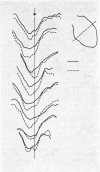Abstract
In order to study the relation between the 'rapid filling wave' of the apex cardiogram and left ventricular filling, simultaneous apex cardiograms, phonocardiograms, and echocardiograms were recorded in 57 patients. Continuous measurements of left ventricular dimension were derived from the echocardiograms by digitization using manual tracing and a computer. Possible errors in the use of a single dimension to assess left ventricular filling were investigated by frame-by-frame analysis of cineangiocardiograms in 37 patients, and the timing of changes in transverse diameter found to correlate closely with those in cavity area. Mitral valve opening, shown as the initial separation of the valve cusps by echocardiography, preceded the 'O' point of the apex cardiogram in all except 3 patients, the 'O' point appearing to correlate more closely with the time of peak rate of outward wall movement. A third heart sound was present in 29 patients, and in 25 of these it occurred later than the peak rate of wall movement (ment interval 51 ms). The end of rapid filling derived from the dimension trace occurred in relation to the third heart sound after a mean interval of 9 ms, with a range from 50 ms before to 80 ms after the third sound. Peak rates of wall movement were similar in patients with and without third heart sounds. The results show that outward left ventricular wall movement begins with a period of acceleration, with peak rates occurring synchronous with the 'O' point of the apex cardiogram and thus with the nadir of the ventricular pressure trace. Outward wall movement becomes less rapid thereafter, so that the rapid filling wave of the apex cardiogram does not reflect the time of rapid filling of the left ventricle. The 'O' point is not related to mitral valve movement nor does the third heart sound bear a consitent relation to any aspect of left ventricular wall movement.
Full text
PDF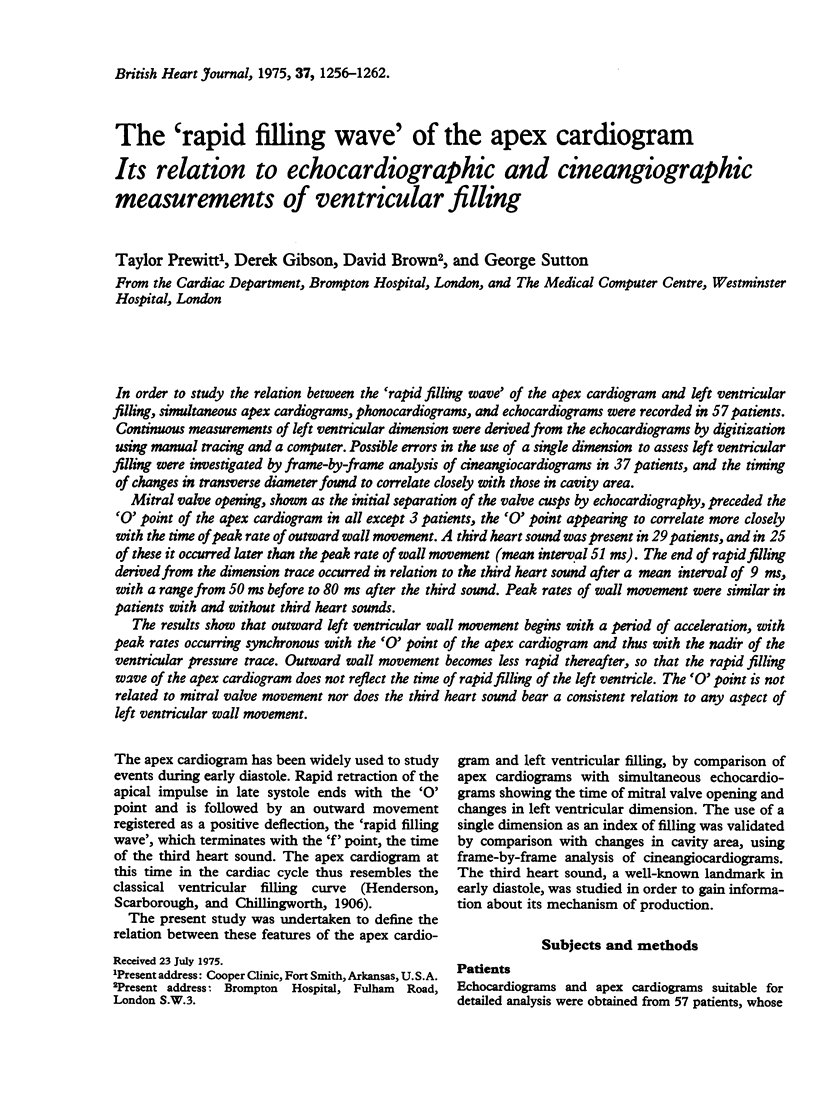
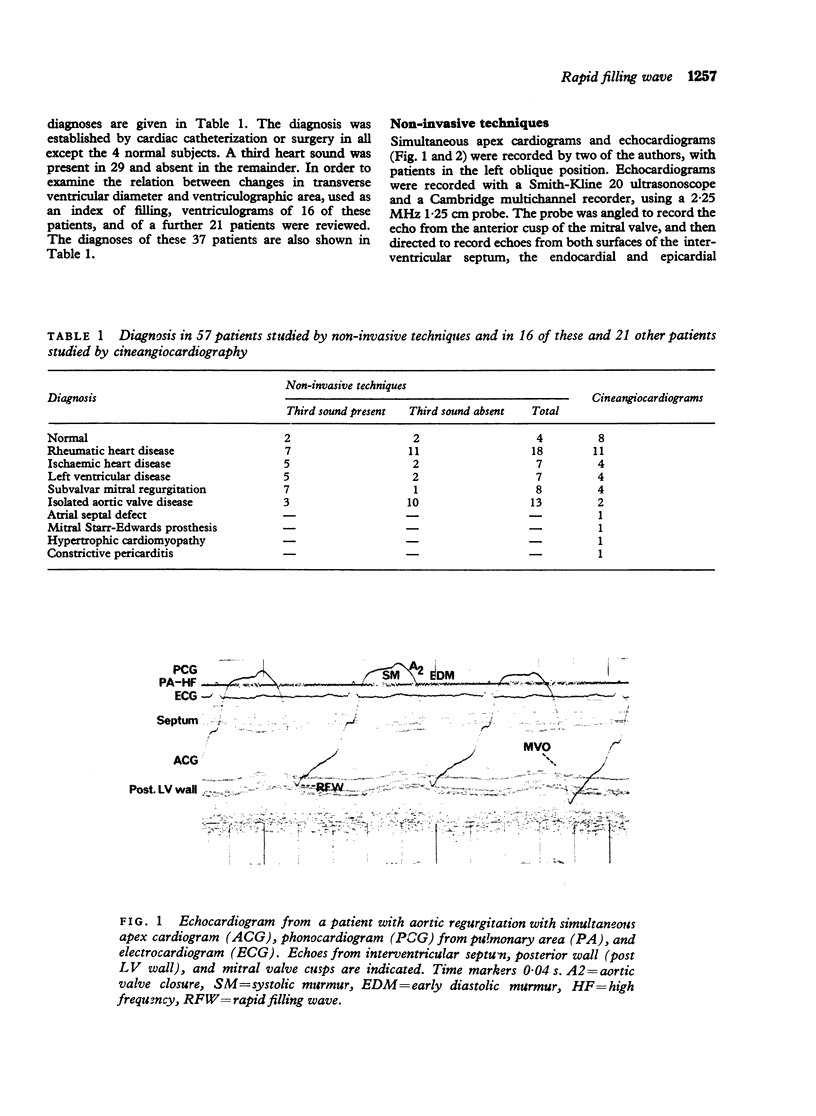
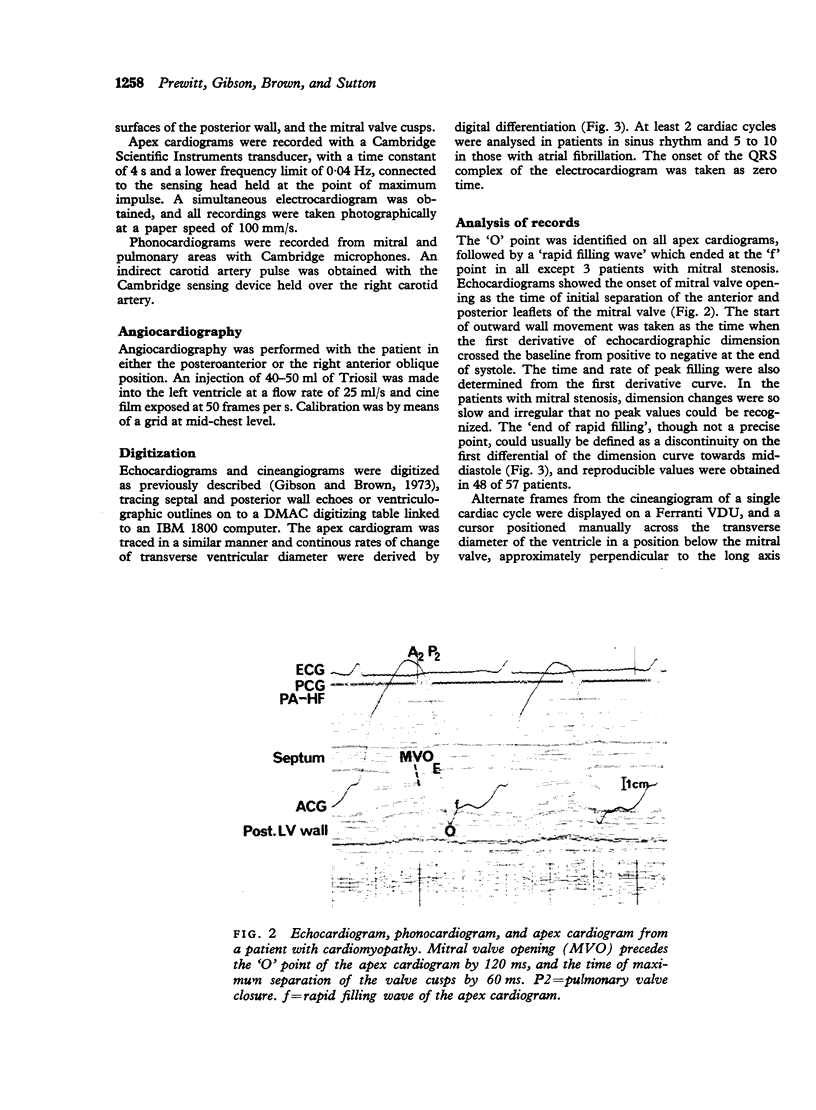
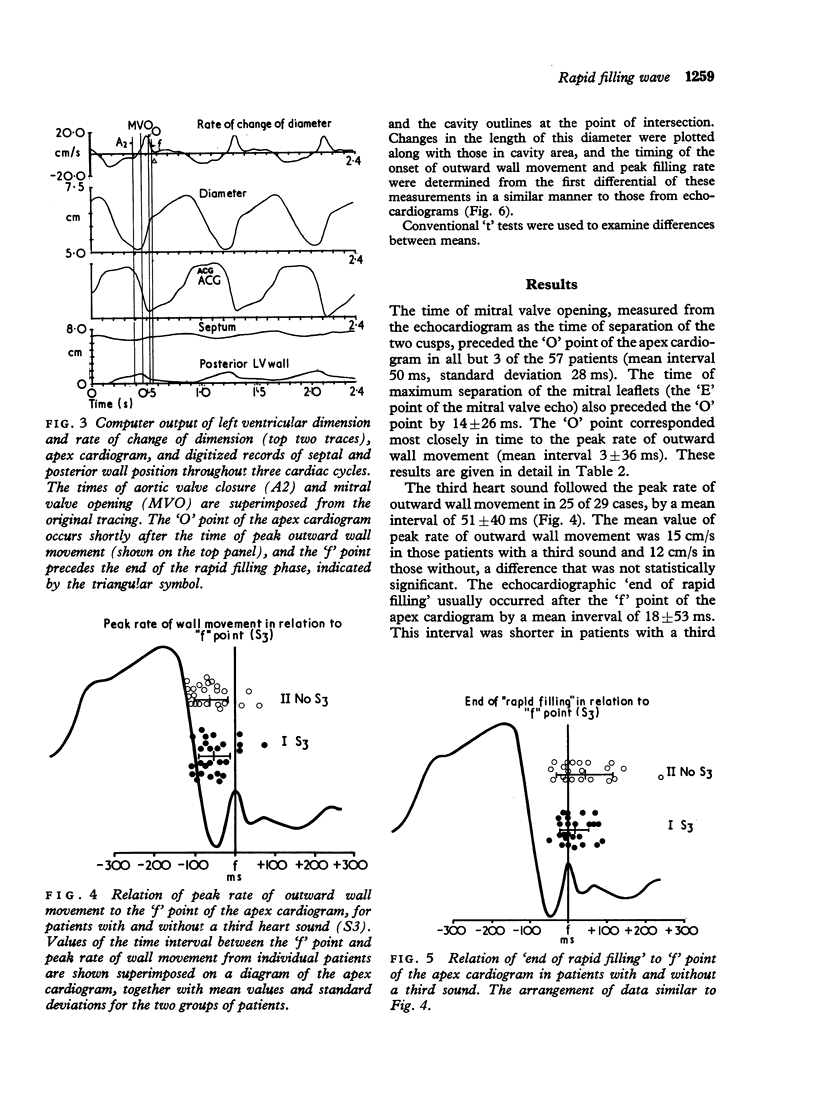
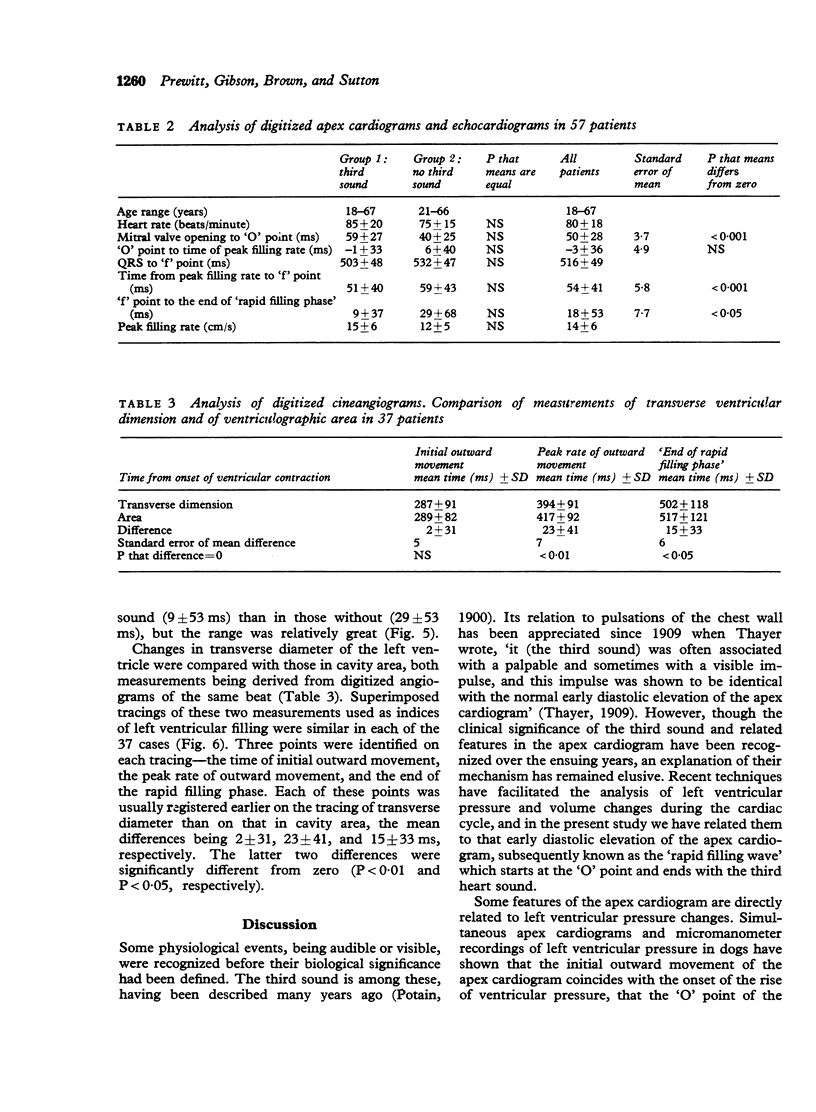
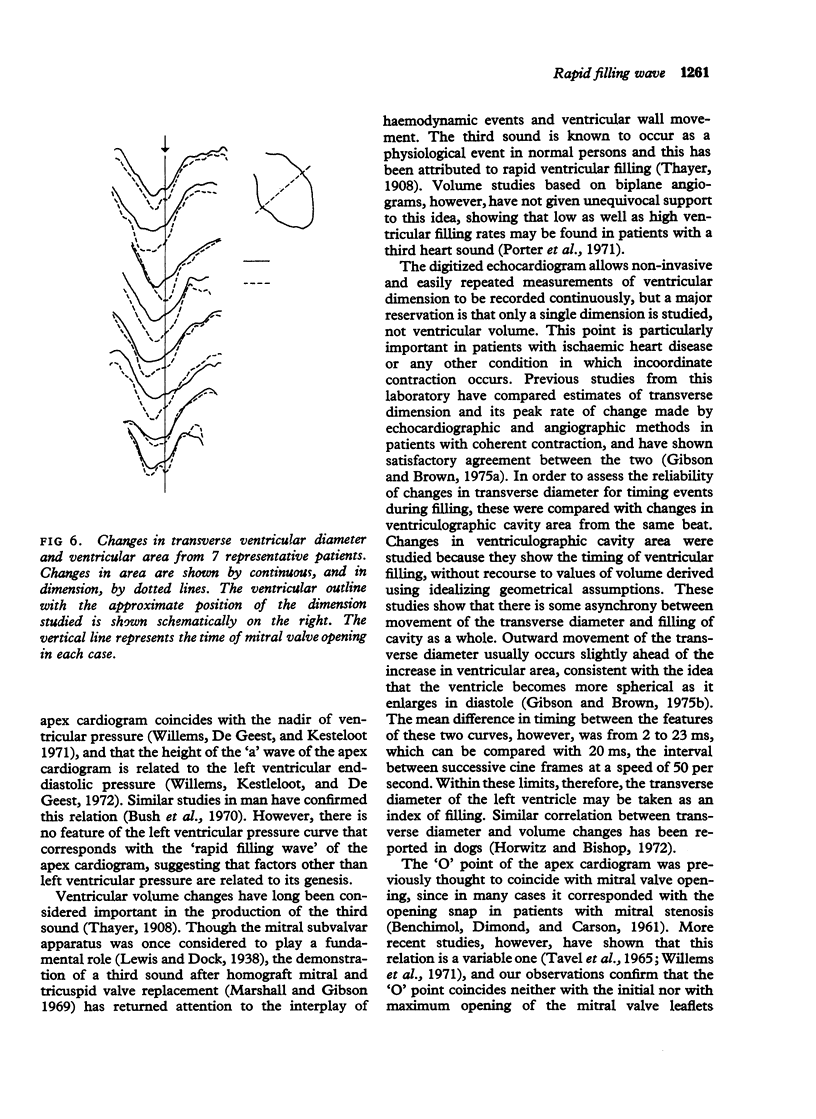
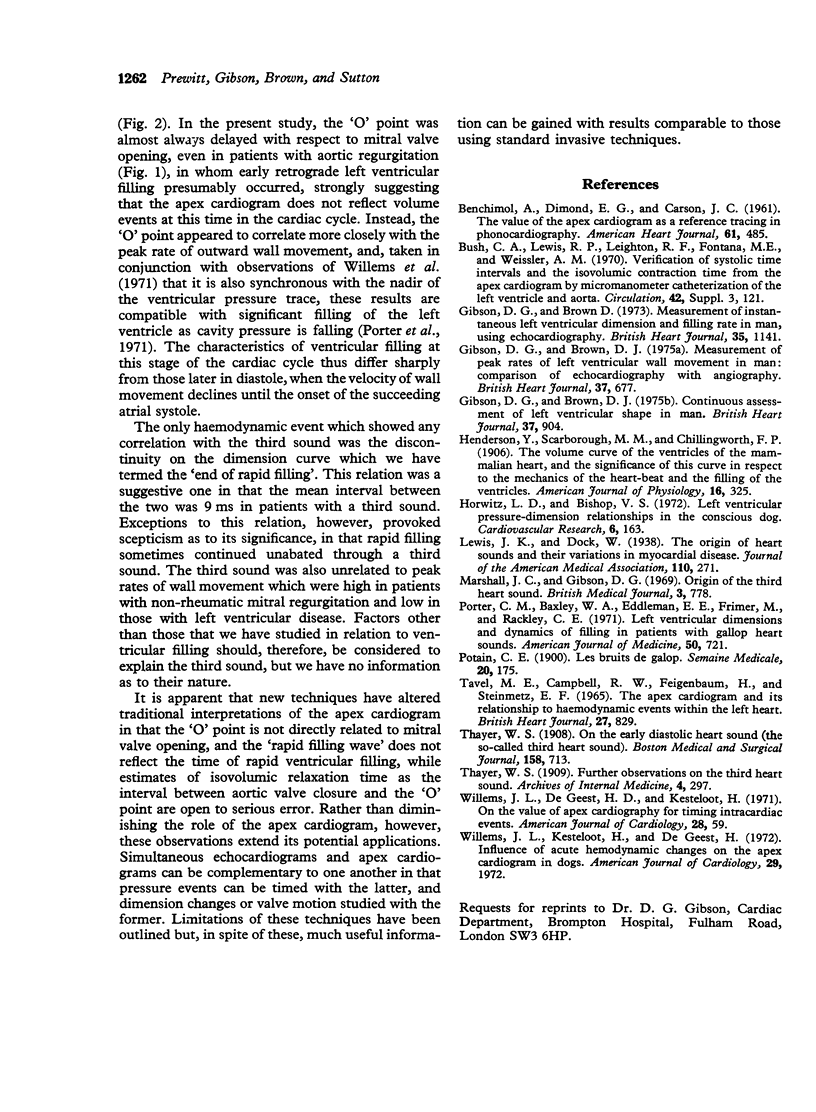
Images in this article
Selected References
These references are in PubMed. This may not be the complete list of references from this article.
- Gibson D. G., Brown D. J. Continuous assessment of left ventricular shape in man. Br Heart J. 1975 Sep;37(9):904–910. doi: 10.1136/hrt.37.9.904. [DOI] [PMC free article] [PubMed] [Google Scholar]
- Gibson D. G., Brown D. J. Measurement of peak rates of left ventricular wall movement in man. Comparison of echocardiography with angiography. Br Heart J. 1975 Jul;37(7):677–683. doi: 10.1136/hrt.37.7.677. [DOI] [PMC free article] [PubMed] [Google Scholar]
- Gibson D. G., Brown D. Measurement of instantaneous left ventricular dimension and filling rate in man, using echocardiography. Br Heart J. 1973 Nov;35(11):1141–1149. doi: 10.1136/hrt.35.11.1141. [DOI] [PMC free article] [PubMed] [Google Scholar]
- Horwitz L. D., Bishop V. S. Left ventricular pressure-dimension relationships in the conscious dog. Cardiovasc Res. 1972 Mar;6(2):163–171. doi: 10.1093/cvr/6.2.163. [DOI] [PubMed] [Google Scholar]
- Porter C. M., Baxley W. A., Eddleman E. E., Jr, Frimer M., Rackley C. E. Left ventricular dimensions and dynamics of filling in patients with gallop heart sounds. Am J Med. 1971 Jun;50(6):721–727. doi: 10.1016/0002-9343(71)90180-x. [DOI] [PubMed] [Google Scholar]
- Tavel M. E., Campbell R. W., Feigenbaum H., Steinmetz E. F. The apex cardiogram and its relationship to haemodynamic events within the left heart. Br Heart J. 1965 Nov;27(6):829–839. doi: 10.1136/hrt.27.6.829. [DOI] [PMC free article] [PubMed] [Google Scholar]





